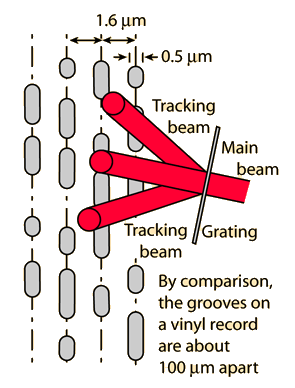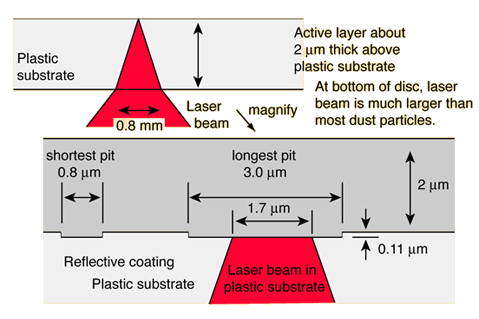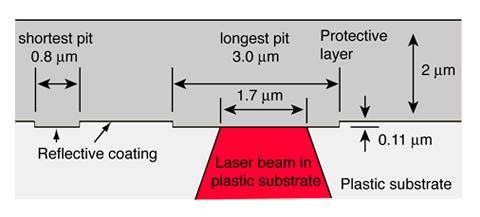Digital Data on a Compact Disc
Binary data (0's and 1's) are encoded on a compact disc in the form of pits in the plastic substrate which are then coated with an aluminum film to make them reflective.

The data is detected by a laser beam which tracks the concentric circular lines of pits. The pits are 0.8 to 3 micrometers long and the rows are separated by 1.6 micrometers.
| Scaled disc details |
CD concepts
Sound reproduction concepts
Reference
Rossing
Physics Teacher, Dec. 87
| HyperPhysics***** Sound | R Nave |




